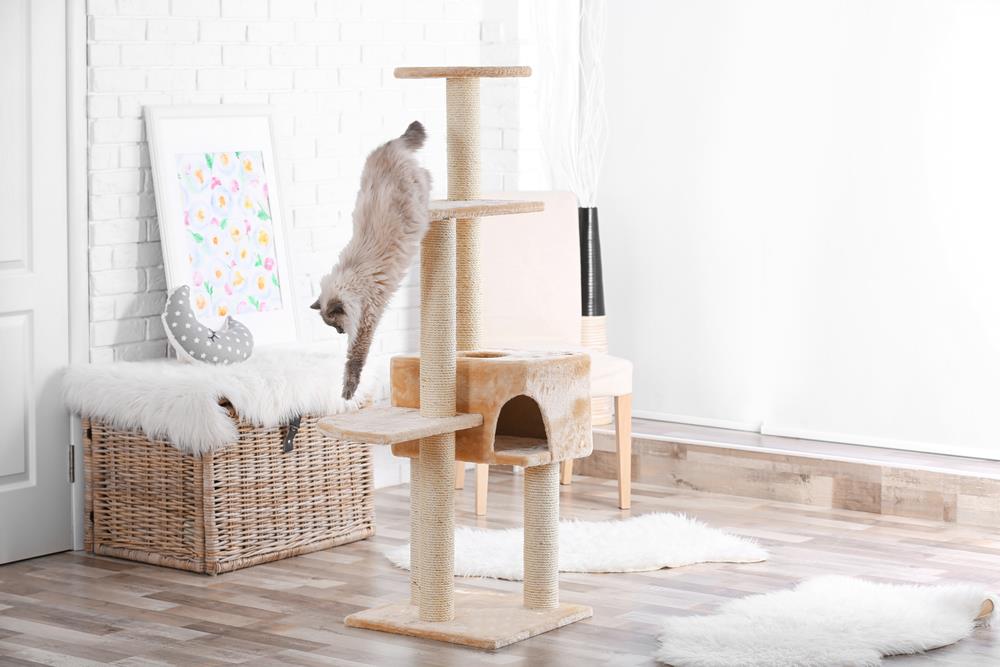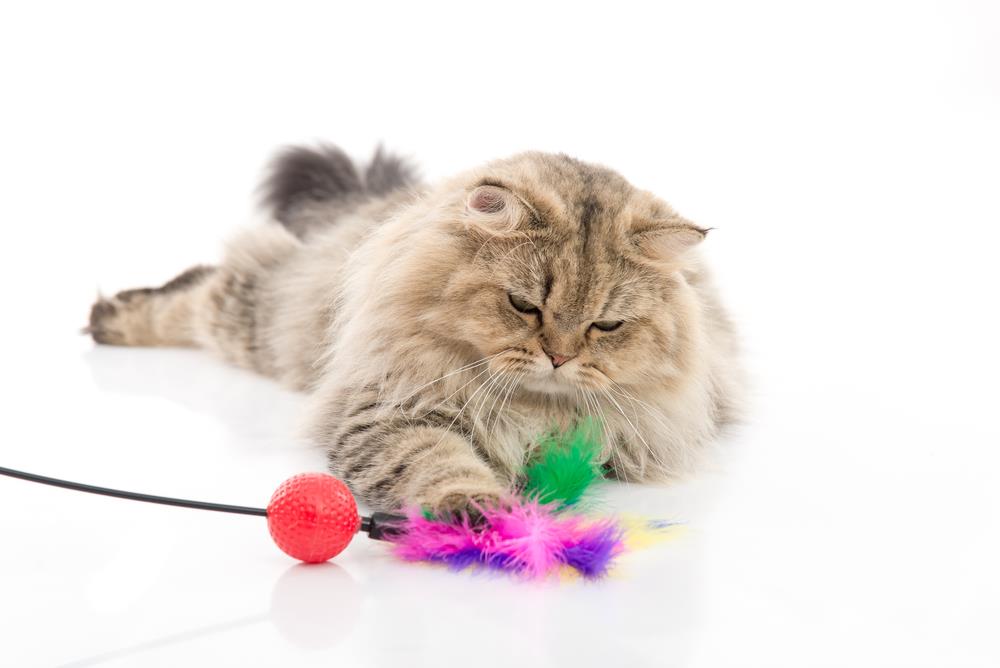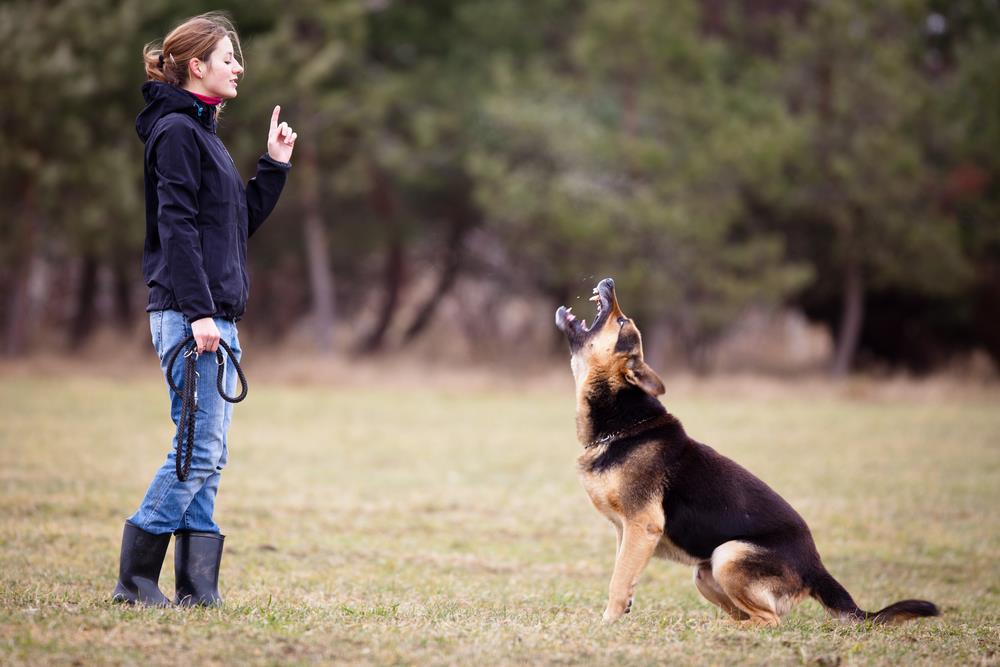An enriched environment is a living space equipped with stimuli that promote the mental and physical well-being of indoor pets. It goes beyond the basic needs of food, water, and shelter, providing opportunities for pets to engage in natural behaviours and activities that stimulate their brains and bodies.

The Relevance of Mental and Physical Stimulation for Indoor Pets
Mental and physical stimulation are crucial for indoor pets. Without it, pets can become bored, frustrated, and develop behavioural problems. Providing toys, puzzles, and opportunities for exercise can help keep pets mentally sharp and physically fit.
Impact of an Enriched Environment on a Pet’s Health and Behaviour
Studies confirm the positive impact of an enriched environment on a pet’s health and behaviour. Pets in enriched environments are generally healthier, more active, and exhibit fewer behavioural problems. They have lower stress levels, leading to improved immune function and overall health.
Understanding the Unique Needs of Different Pet Species
Every pet species requires a unique approach to care. Cats need different care than dogs and exotic pets like reptiles or birds have entirely different needs. It’s crucial to understand the specific requirements of your pet’s species to provide them with the best possible care.
Evaluating the Specific Requirements According to Your Pet’s Age, Breed, and Health Status
Your pet’s age, breed, and health status drastically affect their care needs. A young pet may require more training and socialisation, while an older pet may need extra medical care. Breed-specific needs are also crucial to consider, as certain breeds have unique health or behavioural issues.
Understanding the Importance of Considering Your Pet’s Personality and Preferences
Finally, considering your pet’s personality and preferences is essential. Some pets are more active and require more playtime, while others prefer quiet and solitude. These preferences should be respected to ensure your pet’s happiness and well-being.
Physical Enrichment: Providing Adequate Exercise Opportunities
Regular physical exercise is imperative for the health and happiness of indoor pets. Just as it boosts human health, exercise enhances the physical and mental well-being of pets, reducing obesity, promoting cardiovascular health, and curbing behavioural issues.

Variety of Exercise Equipment and Toys for Pets
A plethora of exercise equipment and toys are available to cater to the unique needs and preferences of different pets. From climbing trees for cats to hamster wheels, ensuring your pet has access to appropriate exercise equipment is crucial.
Structuring Exercise Routine and Playtime for Pets
It’s essential to structure a regular exercise routine for your indoor pet. This routine should balance active playtime with periods of rest.
Mental Enrichment: Stimulating Your Pet’s Mind
Mental enrichment, a critical aspect of pet care, involves providing challenges that stimulate your pet’s mind, enhancing their cognitive abilities and overall happiness. This concept, affirms that mental stimulation is as vital as physical exercise for pets.
Interactive Toys and Puzzles
Interactive toys and puzzles are practical means of mental enrichment. These tools challenge pets to solve problems, promoting mental alertness and reducing boredom. Consider options like treat-dispensing toys, puzzle feeders, and interactive games to keep your pets engaged.
Training, Games, and Activities
Training sessions and games that challenge your pet’s intellect are another excellent way to promote mental enrichment. Teaching new tricks, playing hide and seek with treats, or using games that stimulate their natural instincts can significantly enhance their cognitive abilities.

By incorporating mental enrichment in your pet’s routine, you ensure their overall well-being, paving the way for a happier, healthier pet. Remember, a mentally stimulated pet is a content pet.
Social Enrichment: Encouraging Social Interaction Among Pets
Understanding the distinct social requirements of your pets is crucial. Different species have varying needs, with some thriving on constant companionship, like dogs, while others, such as cats, require a balance between socialisation and solitude.
Providing ample opportunities for your pet’s social interaction can be achieved in numerous ways. This can include organising ‘play dates’ with other animals, or ensuring family involvement in play and care. Considering the pet’s personality is key when deciding on the best approach.
The balance between socialisation and alone time is essential for your pet’s mental health. Over-socialisation can lead to stress, while too much alone time may result in destructive behaviour. Regularly monitoring your pet’s behaviour can provide insight into the optimal balance for their wellbeing.
Nutritional Enrichment: Engaging Pets in Feeding Activities
Nutritional enrichment is a crucial aspect of pet care that stimulates their natural instincts, keeping them mentally and physically engaged. This concept revolves around the idea of adding complexity to feeding routines, making meal times a source of challenge and entertainment for pets. It’s an effective strategy to prevent obesity and boredom, especially for indoor pets.
Feeding Toys and Puzzle Feeders
Feeding toys and puzzle feeders are excellent tools that promote nutritional enrichment. These devices hide food in compartments that pets need to manipulate to get their meal. It creates a fun and stimulating challenge, ensuring your pet is not only fed but also mentally engaged. Brands like KONG and Nina Ottosson offer a variety of such toys.
Encouraging Natural Feeding Behaviours
Interactive feeding methods encourage pets to exhibit their natural feeding behaviours. This includes foraging, hunting, and problem-solving, all of which can be simulated with the right tools and feeding strategies. For instance, hiding small amounts of food around the house for your pet to find can simulate the experience of hunting and foraging.
Creating a Safe and Comfortable Space for Your Pet
When it comes to creating an enriching environment for indoor pets, safety should be your first priority. It’s imperative to ensure the pet’s living quarters are free of potential hazards such as sharp objects, toxins or small items they could swallow.
Along with safety, comfort is paramount. Every pet needs a private, cosy space where they can relax and sleep. This can be achieved by setting up a pet-friendly area with soft bedding and hideouts.
Tips on Setting Up Your Pet’s Living Space
- Choose a quiet corner of your home for the pet’s area.
- Ensure the space is well-ventilated and temperature-controlled.
- Choose pet-friendly materials for bedding.
- Provide a hideout for your pet to retreat to.
- Regularly clean and disinfect the area.
The Imperative of Regularly Updating the Enrichment Plan
Keeping your pet’s enrichment plan dynamic and engaging is paramount for their well-being. As part of a holistic approach to pet care, a static enrichment plan can lead to boredom, potentially triggering behavioural issues. Therefore, updating the plan regularly not only sustains their interest but also ensures they remain mentally and physically fit.
Tips for Keeping the Enrichment Plan Fresh
- Rotating Toys: Regularly changing your pet’s toys not only prevents wear and tear, but also keeps the pet intrigued.
- Altering Routines: Drastic changes can stress pets, but subtle alterations in feeding or playtime routines can stimulate their minds.
- Introducing New Activities: Activities such as puzzle toys or new tricks can challenge a pet’s intellect, keeping them engaged.
Monitoring and Adjustments
Regular monitoring of your pet’s response to the enrichment plan is pivotal. Not all pets will react the same way to changes, so it’s vital to make necessary adjustments based on their individual responses.
Creating an Enriching Environment for Indoor Pets
Related posts
Recent Posts
- Pet Emergency Preparedness: Ensuring Your Furry Friend’s Safety in a Crisis
- The Importance of Pet Vaccinations: Protecting Your Furry Friends
- Kitten Feeding Guide: Essential Tips for New Cat Owners
- Dangerous Pets: What You Need to Know Before Bringing One Home
- Understanding Pet Loss Grief: Coping with the Loss of a Beloved Animal Companion


